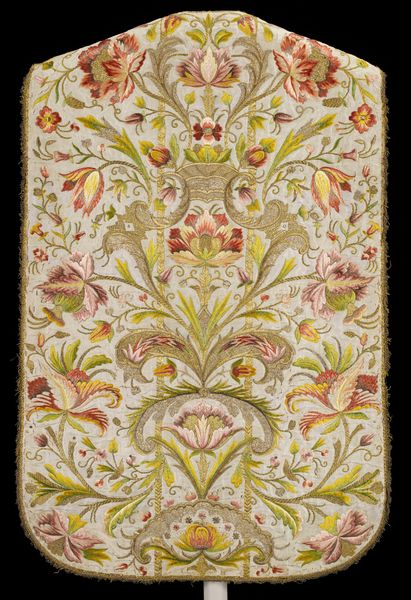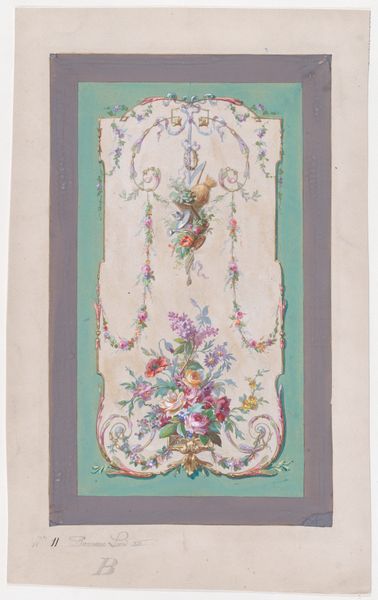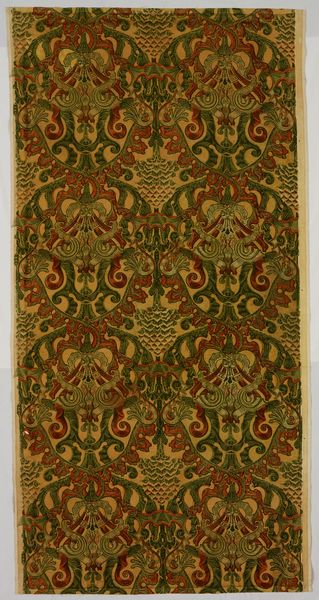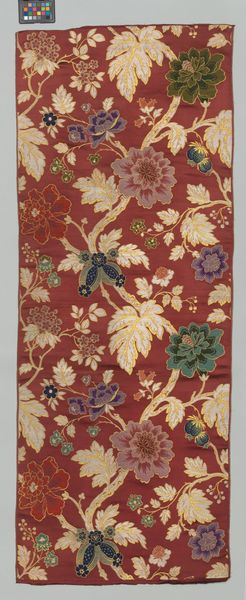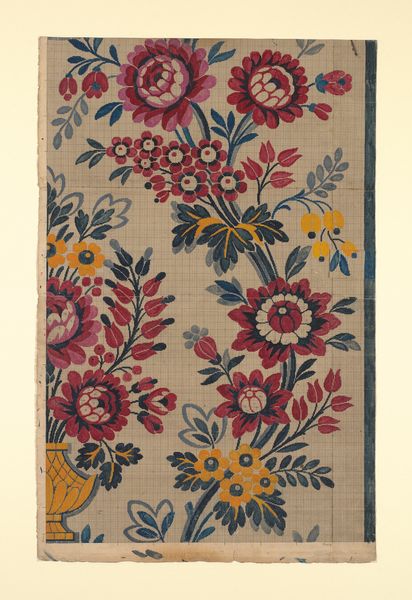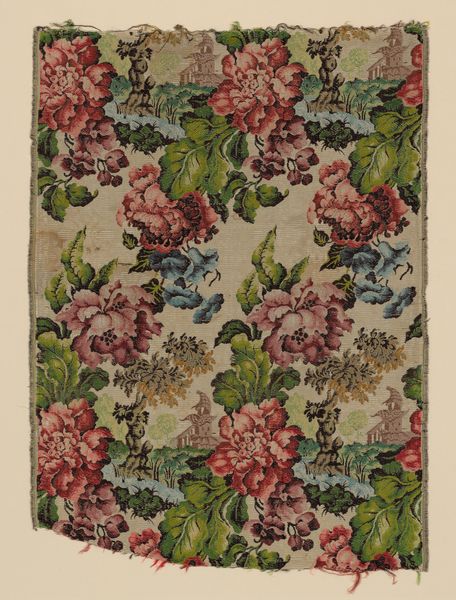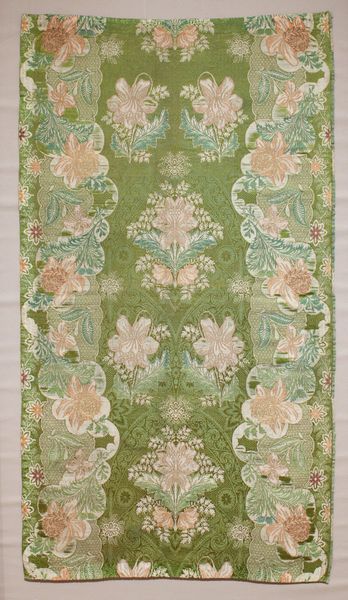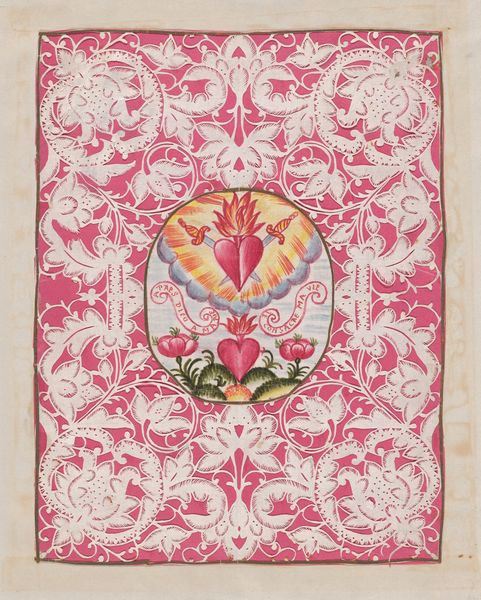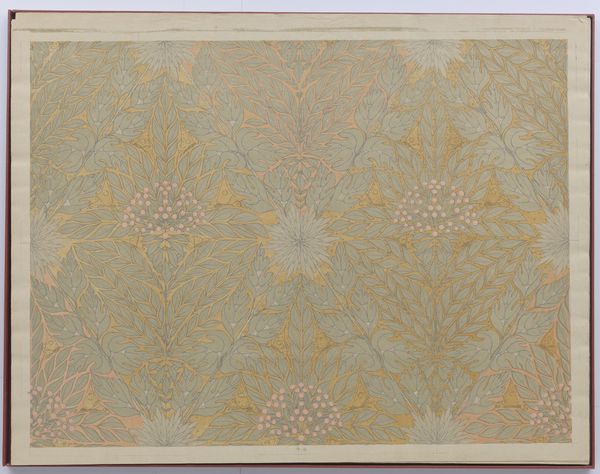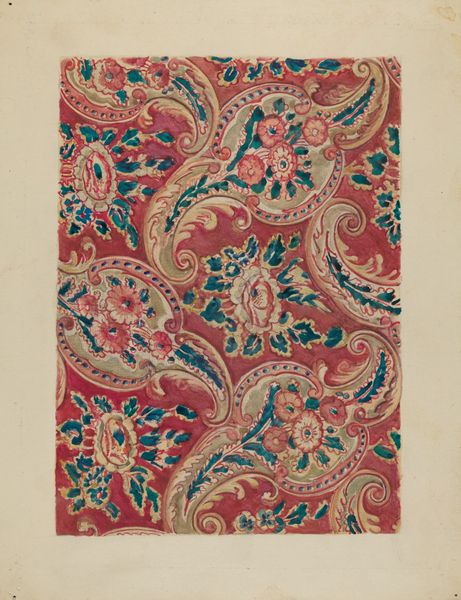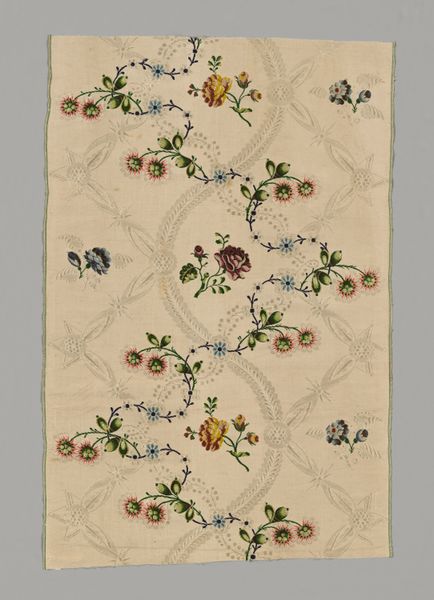
Dimensions: H. 78 x W. 46 3/4 inches (198.1 x 118.7 cm)
Copyright: Public Domain
Curator: Immediately, I'm drawn to its serene formality – it's a bit like a garden caught in a hushed moment just before twilight, isn't it? Editor: This piece is a "Panel of Floral Embroidery," likely crafted sometime between 1870 and 1885. The handiwork can be found at the Metropolitan Museum of Art, in New York, and its making is associated with William Morris and the Arts and Crafts movement. Look closely and you can really perceive all the time spent on it. Curator: Absolutely. What strikes me is the Romantic sensibility, the way the pattern curls and reaches with an almost dreamlike quality. But the fact that it's embroidery… it has a domestic intimacy that recontextualizes those grand Romantic gestures. Editor: Precisely, and to consider that this falls squarely within the Arts and Crafts movement shifts my view. The use of textiles—typically categorized as craft—elevated to "art." Here we find a potent re-evaluation of Victorian-era hierarchies, questioning the rigid boundaries separating fine art and applied arts. The materiality matters; each stitch speaks volumes about the labor, the maker’s dedication. Curator: Yes, the labor! It almost seems devotional. Imagine someone patiently working these threads, pouring intention and care into each detail. Do you think the romantic qualities in the work would offer them a release from their social circumstances? The idea that through beauty and labor the individual has the opportunity to explore deeper emotion? Editor: I do think so, and one thing is evident—the intricate designs would require skill, time, and access to materials—hinting at the class and means behind such undertakings. Moreover, the creation itself provided a form of resistance against the industrialization of the Victorian era. This insistence on handmade creation offers an important critique of mass-produced goods, highlighting both aesthetic and social values. Curator: Thinking about all this… the textile feels deeply human, maybe even a bit defiant. Editor: I agree. Analyzing this through the lens of production and materiality only enriches its artistic expression. It transcends mere ornamentation and evolves into a testament of an era’s social and cultural currents.
Comments
No comments
Be the first to comment and join the conversation on the ultimate creative platform.
